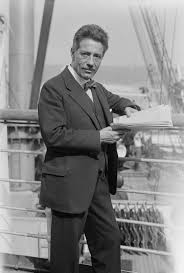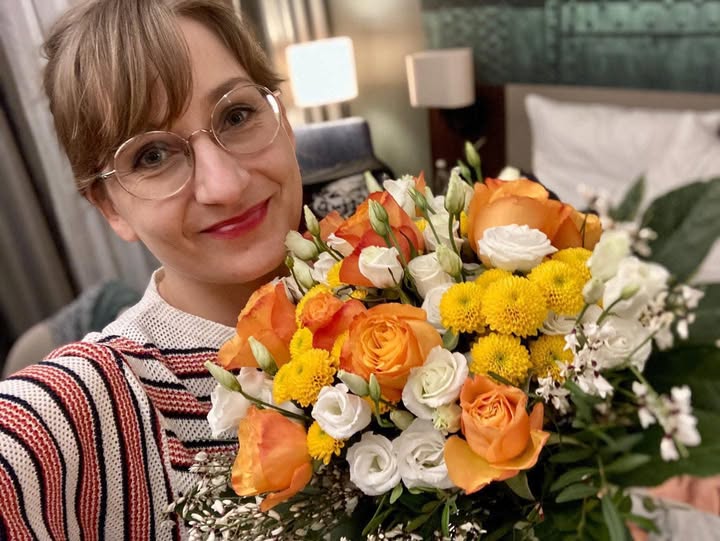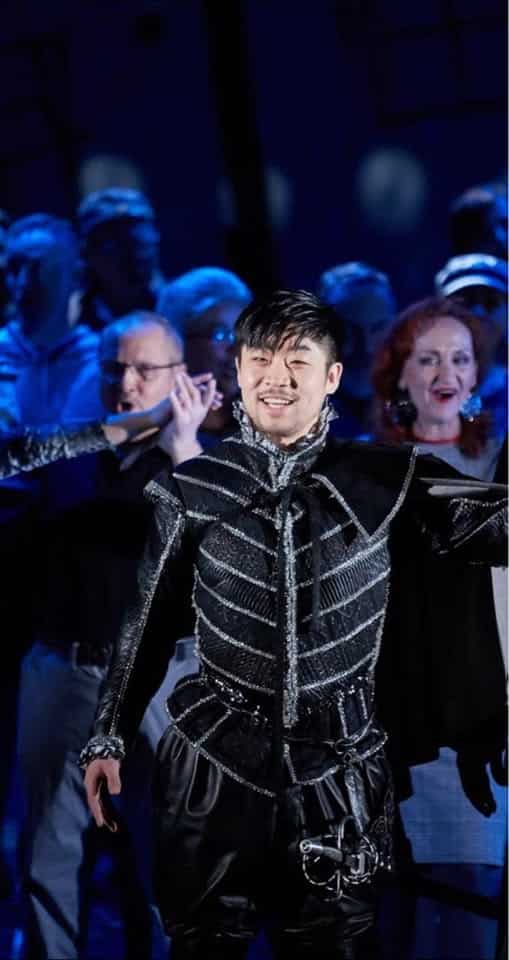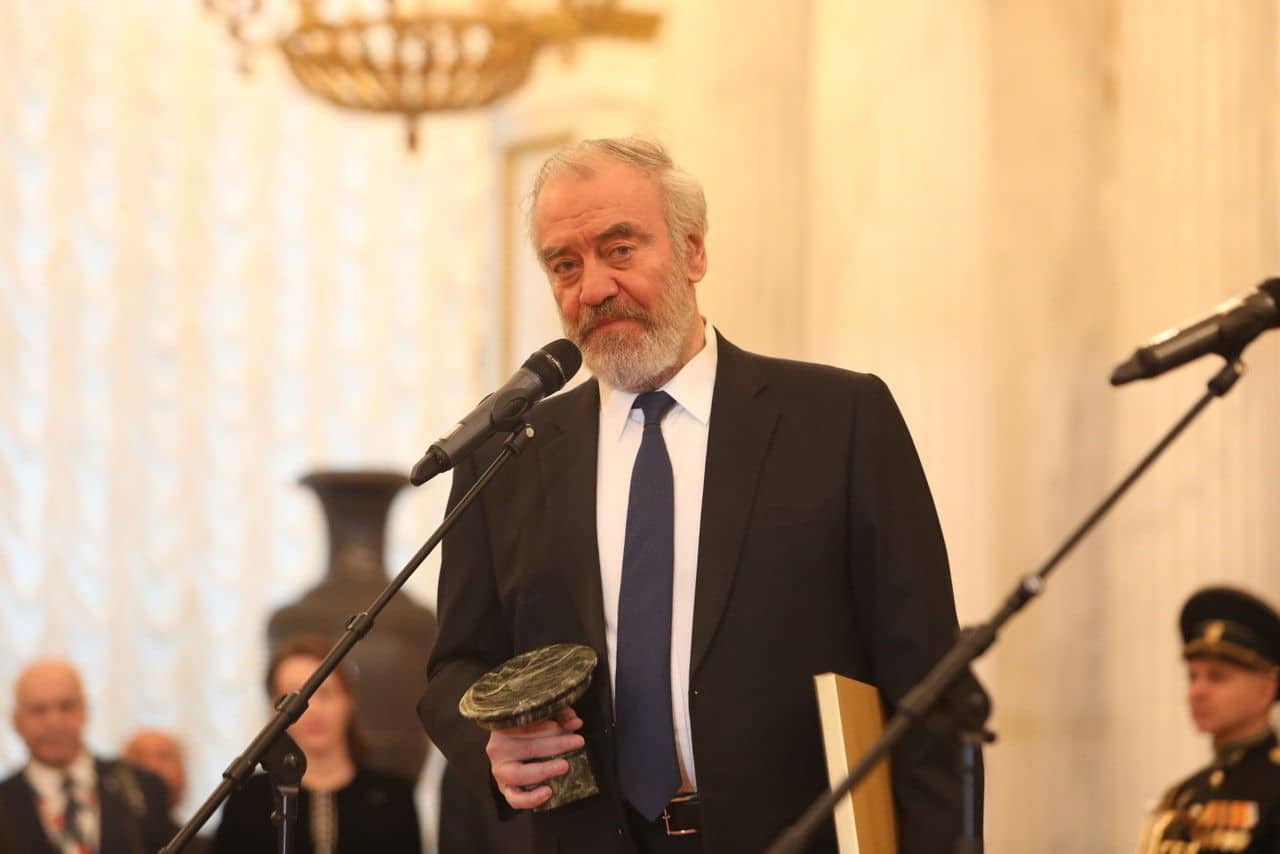The Slipped Disc daily comfort zone (228): On the Fritz
mainIn the 1920s, the great violinist started playing pieces he claimed to have discovered in archives, written by largely-forgotten composers of the late baroque period. He played them as encores and the public adored them. Then some literalist music scholar called them out as fake and Fritz owned up to composing them himself.
This is one of Fritz Kreisler’s fake-baroque pieces. Phony or not, it comes straight from the heart.






And here is a genuine baroque piece, Ciaccona in A, Johann Heinrich Schmelzer.
https://www.youtube.com/watch?v=OIQz861Zr3o
Hélène Schmitt, baroque violin
Jan Krigovsky, cello
Stephan Rath, chitarrone
Jörg-Andreas Bötticher, claviorgano
The idiots who thumbed you down Doc are cretins, who know nothing about real music. That Ciaccona reminds me of an Irish air Avondale. No one in 2020 could have composed it, all they can do is make inane noises resembling a bilge pump running out of Diesel.
Yes a bilge pump running out of Diesel is exactly what last century’s music sounded like. They could not even do that in 2020.
Doc, here is Simon Chadwick Irish harper based in Armagh playing Turlough O’Carolan’s Planxty Drury on a wire strung Irish harp. c 1695.
Thank you, Doc. I enjoyed it, but found it just a bit doleful. Then it led to me to a Ciaccona of Antonio Bertali, a contemporary of Schmelzer in Vienna, much more cheerful in these gloomy times:
https://www.youtube.com/watch?v=lLmskBnexGQ
Madam Maxwell, Turlough O’Carolan, wire strung harp. Simon Chadwick, Armagh.
O’Carolan lived between 1670-1738, he was blinded by smallpox at the age of 18 and once played with Francesco Geminiani, leading to his piece known as Carolan’s concerto.
https://www.youtube.com/watch?v=IEawQgIJbEs
A beautiful performance of beautiful music.
I prefer the real Baroque. What is his quarrel with Bach?
Yes cut and paste music can be done by anyone even Banksy.
Beautiful. This brought tears to my eyes. Thanks for sharing.
It doesn’t sound like fake Baroque to me at all; it sounds like genuine 19th-c. salon (which is not meant as a slight).
Cardenes was, until one of its bankruptcies, concertmaster of the San Diego Symphony; he escaped those financial straits to Pittsburgh, where he has made himself at home. It’s good to be reminded of his qualities.
Kreisler’s music was known to be “fake” before I was born, so I never had the chance to be fooled. To me it also sounds like pure 19thC salon. Again, not a slight — I was just coming on here to say something in praise of salon music, and how there is a place for music that is charming and sincere but doesn’t need to shake its fist at the heavens. But it kind of makes you wonder, what did they hear that made them think it was for real?
Fortunately the music is good enough (charming, sincere, lovely enough) to be played on its own.
One of Shlomo Mintz’s first recordings for DG was an album of Kreisler pieces. Worth listening to, if you can find it.
Wonderful to hear some good old fashioned octave wide vibrato again!
My understanding was that Kreisler did not deliberately want to fool people but assumed that he would not be taken seriously as a composer by the critics if he used his own name. Therefore, he used a pseudonym.
How many have read Fritz Kreisler’s little book about his experience as an Austrian soldier idn World War I, the “Great War”, in which he was wounded but recovered? Ill wager David Nlson has.
Another reason sometimes given for the pseudonyms is that he didnt want his name over-used in his programs. Music of earlier times was not nearly as well-known in those days. He must have read reviews with interest.
The story of the Kreisler “fakes” (which is what my first violin teacher called them) is more complex and interesting than the bland statement of the chronology would have you believe. And Kreisler was perhaps not as modest, nor as mild mannered, as he has come to be assumed.
My father heard Kreisler play before the truth was revealed about the series of so called “Classical Manuscripts” and remembered the furor – it truly made international news at the time. I might mention that in my opinion the Preghiera originally attributed to Padre Martini is one of the least convincing of the collection. Listen to the Siciliano et Rigaudon “by” Francoeur, or the Grave “by” W.F. Bach and, if you are familiar with the context of heavily arranged Baroque and Classical music (e.g. the Boccherini Cello Concerto or the Albinoni Adagio) you are more likely to see how no eyebrows were raised by Kreisler’s Classical Manuscripts even by scholars, much less other musicians.
First some background information. Kreisler (who studied composition with Leo Delibes and counterpoint with Anton Bruckner) was born into an age where what few Baroque violin pieces were commonly played in concert were invariably heavily arranged by someone – Ferdinand David, Mendelssohn’s concertmaster, made a virtual cottage industry of such arrangements, including Bach, and the “Vitali” Chaconne, but there were others, such as Hans Sitt. A common alteration is that the accompaniments are greatly re-harmonized, and the music itself is often fragmentized and sorted differently than in the original. Sometimes violinists such as Burmester would arrange for violin and piano something that existed in a piano edition which itself was already highly arranged. And just consider the many performing editions of Handel’s Messiah that were out there. There WERE music scholars back then who knew the composer’s styles but they also knew the “performing editions” that were so plentiful, so they had no revalations to make about them. It took a long time before pianists played urtext echt Scarlatti for example rather than the Tausig arrangements. So even the most informed scholar was unlikely to suspect that the Kreisler “Classical Manuscripts” were total fabrications, much less accuse him of it. They were deemed the heavily Romanticized arrangements that they admitted being.
Second of all, Kreisler had done this before! When he was a younger man he credited his “Liebesfreud” and “Liebesleid” as his arrangements of works of Joseph Lanner, and programmed them with his “Caprice viennois” which he wrote and claimed credit for, and he knew exactly what the critics would do – scorn him for daring to set his own inferior efforts next to the immortal works of a genius like Lanner. They did, and he was able to “confess” his authorship in an appearance of modesty but actually was allowing the critics to make public asses of themselves. He liked to set traps.
Third, the Classical Manuscripts series went back further than the 1920s, into the very early 1900s. The series was well along by 1909. The story is that Kreisler happened upon a wonderful library of music manuscripts in an old monastery in Avignon under the protection of an impoverished group of monks. He bought 53 manuscripts from the collection for a handsome sum – the key fact being, he had the ONLY copies. There was no other edition that anyone could check them against. The other part of his story is that he arranged 19 of the pieces in his own manner to suit to own style. Even the published versions that claimed the authorship of Pugnani or Cartier or Martini or Couperin or Vivaldi stated explicitly the the pieces were so heavily arranged that they “should be regarded as original works” and that copyright was asserted over them on that basis. Some publishers tried to issue their versions of the Classical Manuscripts and were promptly sued by Kreisler’s publisher. Another huge clue. And many of Kreisler’s violinist friends knew the truth for years.
It was not really a music scholar who finally forced Kreisler to admit the truth. In 1934 he decided to admit the hoax and told his publisher reissue the sheet music Classical Manuscripts series as “composed” by him “In the Style Of” the various Baroque and early classical composers. But in early 1935 Olin Downes was supposed to give a lecture about the music of the Baroque and of all things, the signature work he was going to base his entire lecture on was the famous Praeludium and Allegro by “Pugnani.” And Yehudi Menuhin was prevailed upon to perform it live at the lecture. Downes tried to do a bit of leg work in tracking down whatever source work by Pugnani this came from, or even other works by Pugnani that he could compare it to and came up empty, and when he finally called upon Kreisler’s publisher to see what they knew, they supplied the new catalog that had removed Pugnani’s name as composer, and just called it “In the Style Of Pugnani” but composed by Fritz Kreisler. Downes verified this with Kreisler who readily admitted that he composed all the 19 Classical Manuscripts, but for a few measures of a work otherwise attributed to Couperin. He said he did so because it was becoming tactless to have his name appear over and over as composer on his programs. Perhaps. So suddenly Downes had a huge scoop to report and he did so.
And once again a critic stepped into the mess and gave Kreisler the last laugh. No less than Ernest Newman wrote an article to the effect that Kreisler’s ability to pass off as genuine Baroque pieces things that he himself had written proved a point that Newman had been insisting on for years: that Baroque music was the purely mechanical operation of formulas pure and simple, that there was no genius in it and no real composition taking place. Newman did not exclude even Bach and Handel from this position. Kreisler in his view simply applied the formulas and that any trained musician could do the exact same thing. It took no talent because the Baroque composers had no talent.
Kreisler took strong exception. He had worked hard on these pieces and had seen them be praised for 30 years as timeless masterworks for violin. (Even his friend Vincent d’Indy had been fooled after all.) His response to Newman was that the music had been praised as good, so why did it cease to be good when the name attached to it was changed? He denied that there was any formula involved that could allow any musical person to composer in a Baroque manner. Furthermore, if “any trained musician” could do what he did, which was to fool the entire musical world for 30 years, then he invited Ernest Newman to be put to the test, be locked into a room until he could produce even one “Baroque” work that would fool — not the entire musical world, as Kreisler had — but the caretaker of Queen’s Hall. Ouch! And Newman, who made much about his supposed flawless ability as a score reader in spite of being at most a self taught pianist, had gone out on a limb of his own making about what “any” musical person could do, and had been called on it by Kreisler, just as Kreisler had delighted in exposing the ignorance of that music critic years earlier over the “Lanner” pieces. A rather wicked sense of humor.
Oh, and I agree that Cardenes is a very fine violinist.
It is a pretty piece with lovely playing.
How on earth did anyone with any knowledge of classical music, think that this was a work from the Baroque period? It is stylistically all wrong. There are Beatles tunes that sound more like Baroque music than this.
I see that David K. Nelson effectively answered my question. I didn’t give enough weight to the fact that many Baroque works were bowderlized in the day.
Here is John McCormack and Fritz Kreisler performing the Berceuse (Lullaby) from Benjamin Godard’s opera, Jocelyn. The recording was made on March 25, 1914.
https://www.youtube.com/watch?v=eNM7PV9pEQg
Thank you Doc Martin for posting that – one of their nicest recordings I think, but also slightly controversial in some vocal circles because of a dispute over the pitch of the recording and at what pitch (meaning what playback speed for the nominal “78 rpm” disc) it should be listened to at. If I recall the argument correctly, in some transfers vocal fans claimed McCormack’s voice sounds “wrong” compared to just playing the disc at normal 78 rpm speed, but the person doing the transfer claimed that they set the speed so that Kreisler’s open strings were at correct pitch, so it had to be right. It is often necessary to change the speed of “78 rpm” recordings to make the pitches line up. Kreisler’s Beethoven Concerto with Leo Blech is recorded with at least three different versions of “A” as I well remember from trying to create my own tape of our shellacs.
The problem is that Kreisler’s wonderful accompaniment depends very much on harmonics, so that if McCormack had asked that it be transposed up or down a half step or step at the recording session, not unusual with vocalists and something that ordinarily Kreisler and a good pianist could do at the drop of a hat, the pianist could transpose but Kreisler would have to re-tune the fiddle in order for his harmonics to “work” – you can’t transpose natural harmonics like you can artificial harmonics. (I greatly fear I am not making myself clear at all.) So the person altering the speed to match Kreisler’s open strings to “normal” tuning was perhaps undoing a modest bit of scordatura that Kreisler engaged in to make his accompaniment work for the key that the singer found most comfortable. I guess that is a dispute that lives on among McCormack experts and 78 rpm recording re-masterers. If I tried to make this point in my long-ago Fanfare review of the Kreisler/McCormack recordings I likely botched it beyond readability. Easy to demonstrate with fiddle in hand; hard to explain in prose.
You are making yourself perfectly clear, David, and thank you for this and your previous posting.
What’s always interested me is that nowadays–since we know so much music of the Baroque, performed over a wide spectrum of styles from HIP with modern instruments to hyperauthentic on replica or original period instruments-we know what it “ought” to sound like. If you were to play, for instance, a Handel violin sonata on a modern violin with piano accompaniment, following in detail the articulations, fingerings, dynamics, agogics and rubatos of a heavily edited late 19th century edition, it would sound not unlike a Kreisler spurio. There are also in the old salon piece collections which used to dwell in one’s parents’ relatives’ piano benches arrangements of Bach, Couperin, Lully, Handel, etc which also sound very much like the Kreisler compositions.
– “Un” Preghiera? Preghiera, are feminin: Una.
Many thanks to David Nelson for a delightful, informative, and knowledgeable post.
As he suggests, Kreisler was not alone: Albinoni’s Adagio; a “Handel” viola concerto-pastiche by Henri Csadesus that William Primrose recorded, , “Dank sei dir, Herr”, a faux-Vivaldi concerto by Krrisler that he recorded; Hans Kindler’s, Elgar’s, and Stokowski’s orchestral transcriptions, Respighi’s three suits of antique airs and dances, though with no intent to deceive. rivaled those of Busoni, Liszt, Cortot, Stradal, and Edwin Fischer. Other mis-attributions, the “Jena” Symphony and Mozart’s woodwind sinfonia concertante come to mind, along with Beecham’s Gretry and Handel suites.